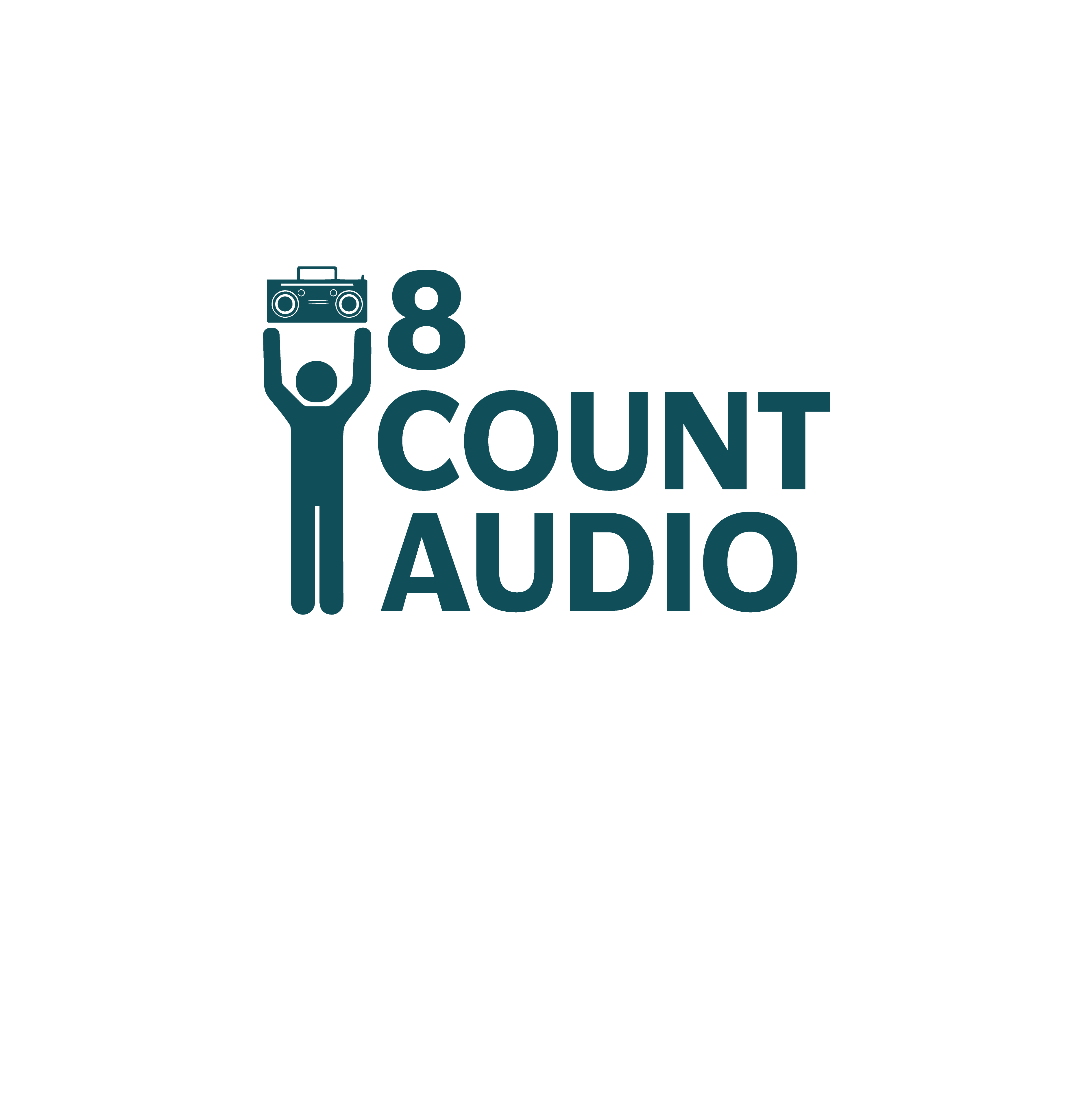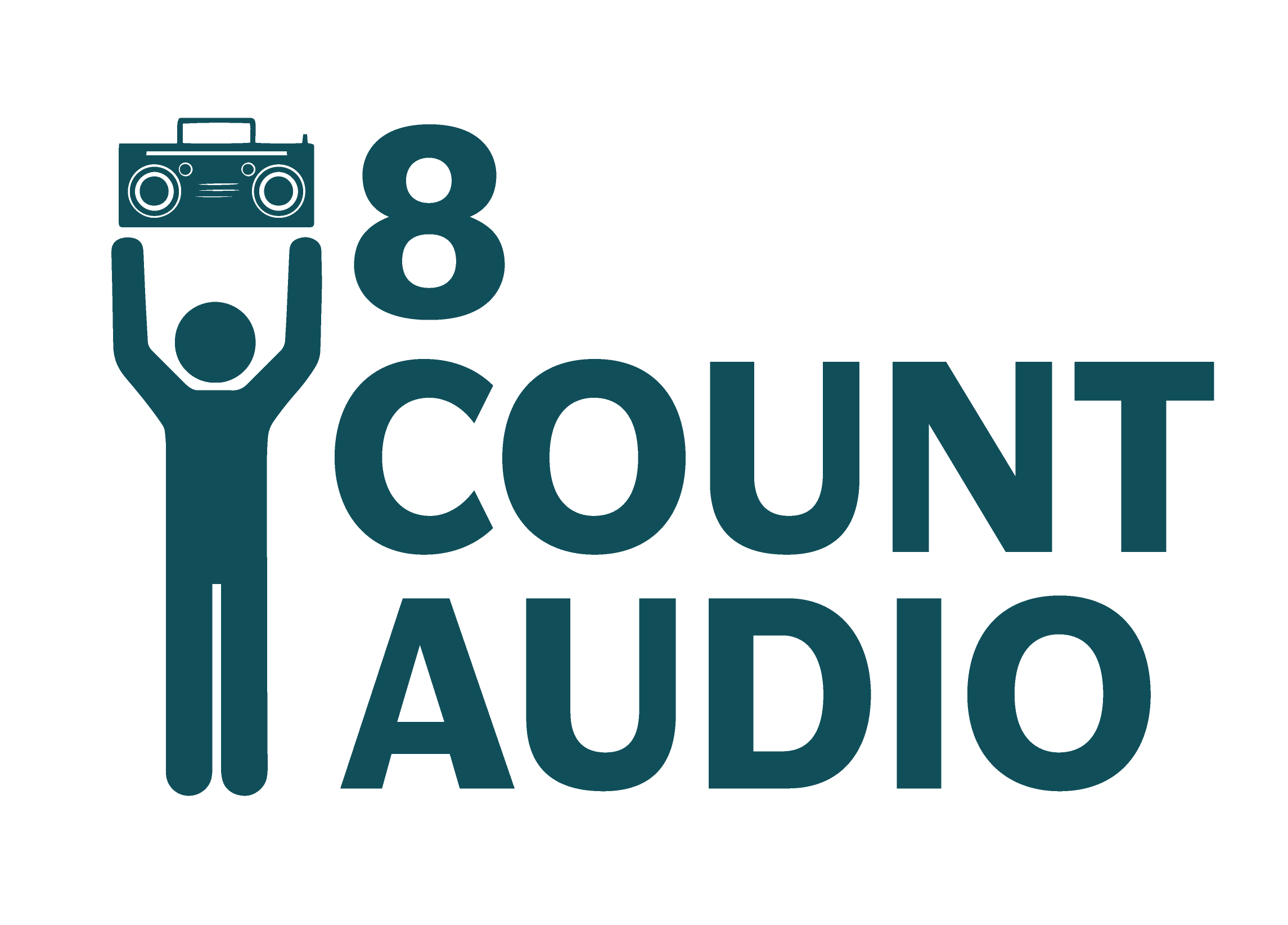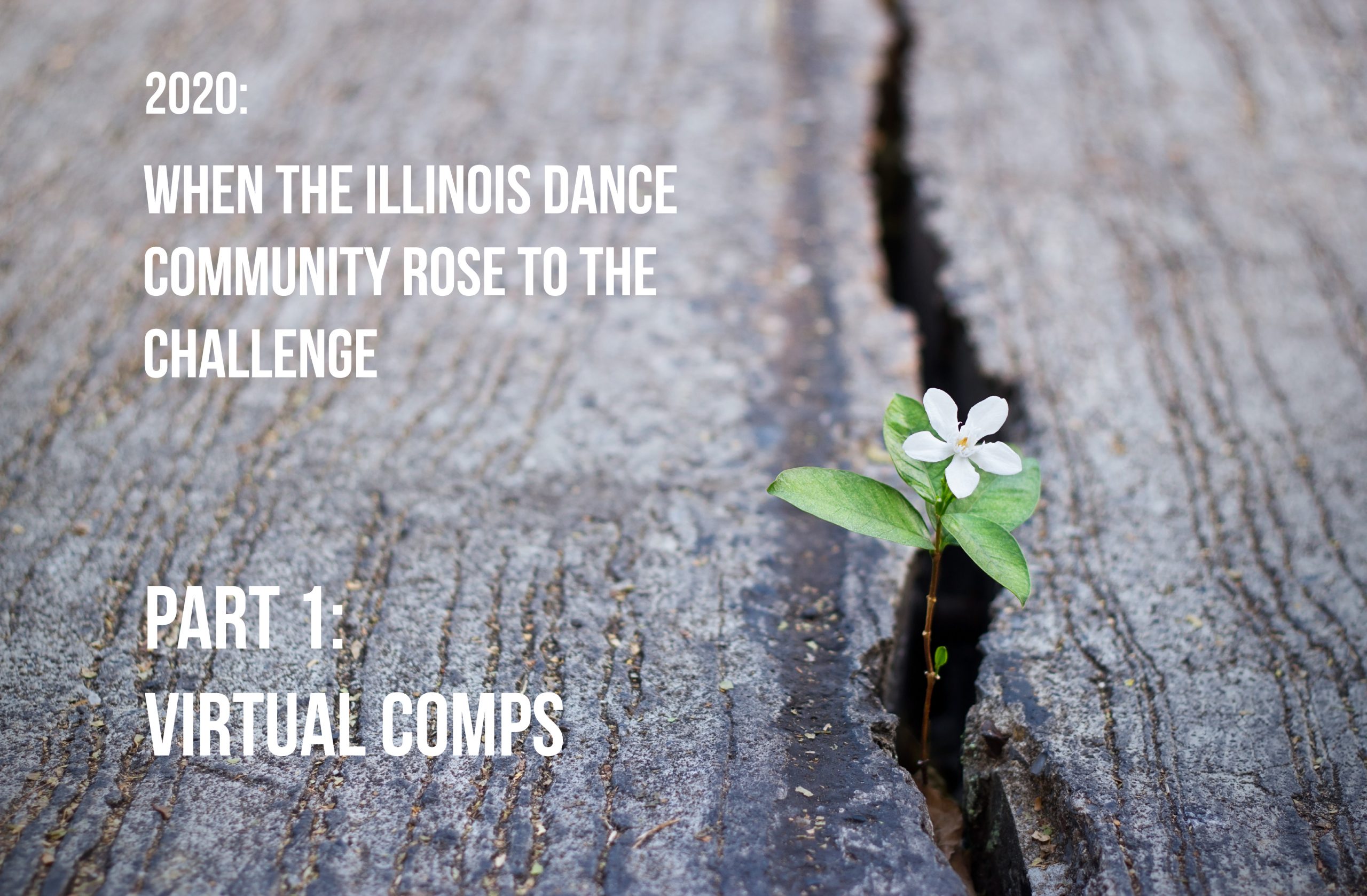
2020 Accomplishments: Designing Virtual Competitions
by Norm Ramil, 8CA main person and dance team fan
12/30/20 7:40pm
For this final week of 2020 you’ll probably come across plenty of “2020 flashback” posts and articles that’ll talk about the obvious (like how 2020 was just about as fun as drinking a quart of expired milk while your parents ask you what you want to do with your life).
In true 8CA style, we’re going to call out the positives, like contest hosts who figured out a way to keep teams dancing and competing–even if those virtual comps didn’t ultimately run (yet).
Let’s start this round of high fives with IDTA, the Illinois Drill Team Association, and then we’ll check out what Minooka did to keep their home competition alive.
Time for the :30 recap of what IDTA is (those in-the-know can skip ahead). The Illinois Drill Team Association was the first statewide organization to hold an Illinois state competition for dance teams, and that tradition has run from 1980 right through 2020. IDTA offers category competition (including for JV) at their weekly contests, and teams and individuals can qualify for their state contest by hitting a threshold score. IDTA’s state happens in mid-February in Springfield.
Many teams from the southern half of Illinois, plus a handful from the Chicago area, run both the IHSA and IDTA weekly schedule. Before 2012, Illinois high school dance teams competed in IDTA, TDI (Team Dance Illinois), or both.
Here’s why a team can go to an IDTA comp and leave in good shape for both IDTA and IHSA state. I can’t stress this enough: one of the IDTA categories (besides pom, jazz, lyrical, etc.) is the IHSA category. That means an IHSA rubric and IHSA judges. So a team can go to an IDTA comp, run their dance in the right IDTA category, and run it again in the IHSA category…potentially qualifying for IDTA state and getting IHSA judge feedback in the same day.
IDTA’s weekly contest schedule runs from December through February. Like any other year, IDTA put out their normal schedule early in the fall but with asterisks—some comps might be in-person, some might be virtual. As the fall of 2020 slipped towards a second surge, IDTA pivoted to an all-virtual schedule, in effect until conditions improved enough for in-person comps.
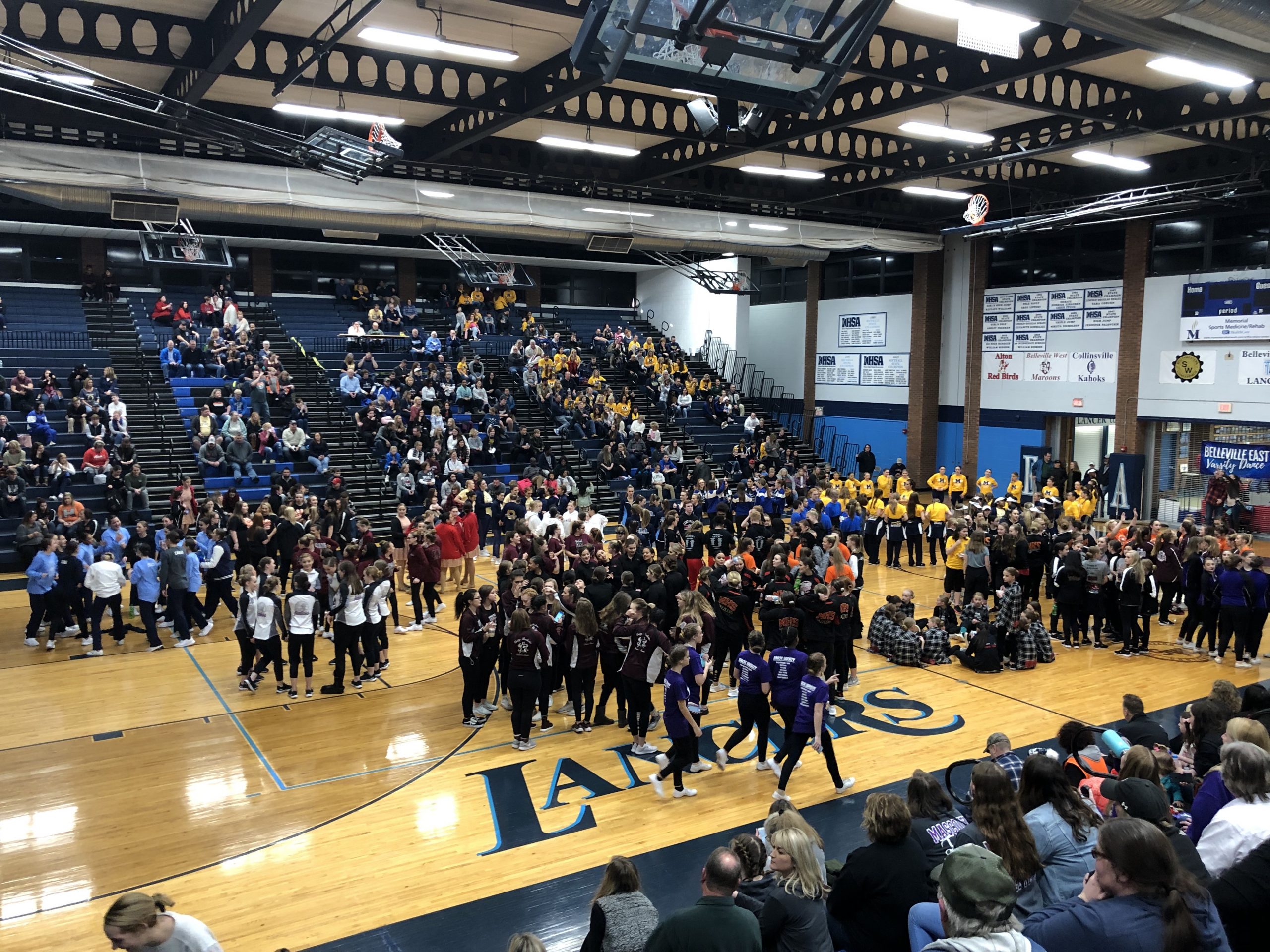
“We wanted to make sure that our teams had the opportunity to compete safely,” wrote IDTA President Michelle Deets in an email conversation with 8CA. “This has been such a crazy time for coaches and team members, and I feel like IDTA has taken a more personal approach to help out our coaches and team members. We have held multiple Zoom meetings with our coaches to get feedback, answer questions and address their concerns.”
Teams were already familiar with the basic process and rules thanks to guidelines and best practices for virtual competitions (listed on IHSA’s competitive dance page as suggestions rather than rules). IDTA turned these into a smooth process: teams register, record the routine, and submit through a link. Judges score the routines on the morning of the competition, and fans can watch routines on the livestream followed by the live results announcements. IDTA ships out the trophies, and teams get their feedback (for the IDTA categories, written and audio, and for the IHSA category, just written).
Smooth and streamlined, for sure. But IDTA’s officers still had to rise to the challenge of making it all work in real life, not just on paper.
Luckily, every October IDTA has a nice run-through built into its schedule to kick off the official IHSA competitive season. This time, it was virtual. “We actually held our first virtual contest the beginning of November–it was our Start the Beat competition that is just for soloists,” said Deets. “We had over 70 routines and our system worked perfectly! The biggest challenge was putting everything together to make sure judges would have easy access to the routines and the scoresheets, and then how the tabulator would access the scoresheets for tabulating scores and sending the scoresheets to coaches. Our IDTA Judging Committee tried multiple options until we finally came up with a system that really works for the entire judging team.”
The IDTA virtual system has an added bonus that’s good for the Illinois dance community. If your program has lived in the IHSA dance ecosystem since 2012, it’s never been easier to try out category-style competition, and from the comfort of your home gym and with the help of your overworked iPhone.
You don’t even need to be an IDTA member. According to President Deets, “The cost is only $50 and that does include the option of entering two routines for that price. If a team would like their routine judged in the actual category of the style of their routine, they can enter it without paying an additional fee. So not only would the coach and team get feedback using the IHSA scoresheet, but they would receive additional feedback using the IDTA scoresheet, but more importantly, they would receive verbal feedback [an audio recording] which, in my opinion, is extremely valuable.”
Over on the IHSA side of Illinois dance, let’s celebrate the Minooka program for quickly adapting their big event to a virtual format.
Minooka’s early December competition has become one of the elite dates on the schedule, known for attracting nearly all of the 3A teams that are likely to battle at IHSA state. It also falls on that first weekend in December, so it’s an early indicator of where 3A teams stand in relation to each other.
Coach Mellissa Wallace and her program are no strangers to innovation. While they weren’t the first hosts to do it, Minooka, a few years back, started splitting the morning and afternoon sessions of their competition to make it super convenient for 1A and 2A to do their thing in the morning and 3A to have the afternoon.
Like the IDTA guidelines, Minooka’s virtual comp policies closely followed IHSA’s recommendations. Teams were to record their routines in their gyms and obviously not edit or alter the videos. A practical exception was made: if a team had to film in a shared, noisy gym, they could overlay the music after recording. Fans would be able to catch all the action on a live stream, followed by the usual awards (with trophies to be mailed out to the recipients). Teams would get their judge feedback by email within 2 days.
It’s clear that Minooka put a lot of effort in preserving as much of the comp day vibe as possible. Coach Wallace’s info sheet even had hashtags for teams to use during their watch parties, encouraging team interaction. Granted, it would’ve been strange for a fan to watch a team go live on Instagram as they watched their own routine, but hey, it’s a weird year and you have to credit Minooka for making the best of it!
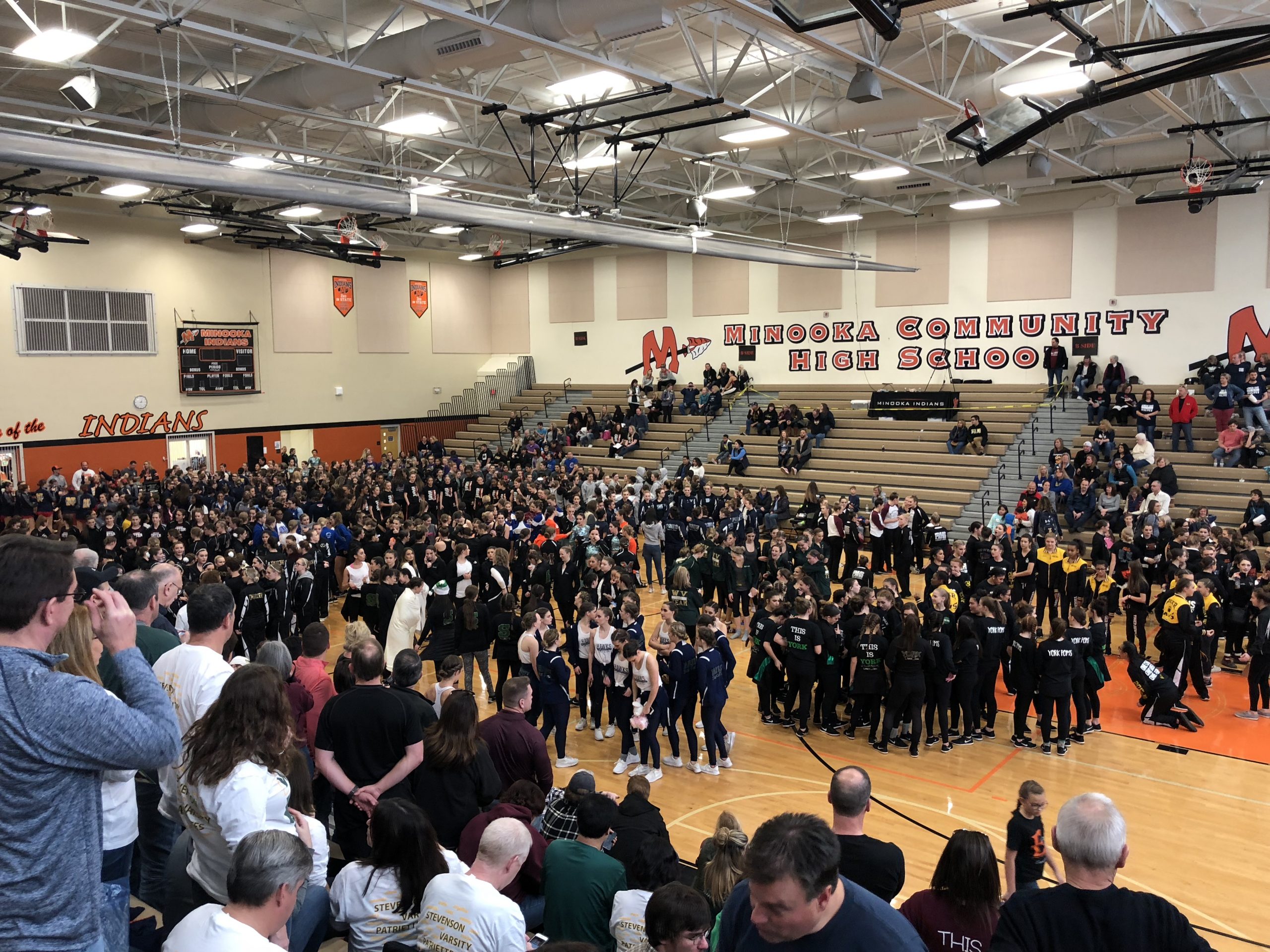
Both Minooka’s and IDTA’s re-imagined, virtual competition formats were smartly designed. Organizers had to keep things fair, practical, and safe–three goals that too often clash in the world of high school sports. And fans wouldn’t have to miss a beat thanks to the live streams. Teams would stay active and be on the road to some kind of state experience (like possibly qualifying for IDTA state or getting valuable feedback that’ll help with IHSA sectionals).
While both efforts are fantastic examples of adapting to circumstances and making the best out of a situation, COVID-19 numbers kept trending in the wrong direction throughout the fall. High school sports went “on pause,” and even these virtual formats couldn’t work if teams couldn’t get together in a gym to record a performance (IDTA has been able to continue with just its soloist category, for now).
But ya gotta love the effort, the grit. These were just a couple examples of rising to the occasion and running with what the circumstances had to offer. And from a practical point of view, these formats and guidelines could totally come into play as early 2021 progresses. We’ll be emerging from the coronavirus crisis, meaning baby steps instead of packed gyms. I’m hoping that sooner than later, that full-blown virtual format will have teams back on the road to competing for trophies and 8CA congratulatory tweets and posts. Until that time comes, contest hosts like Minooka and organizations like IDTA who quickly put together a virtual solution deserve a special shoutout in our year-end celebration!
